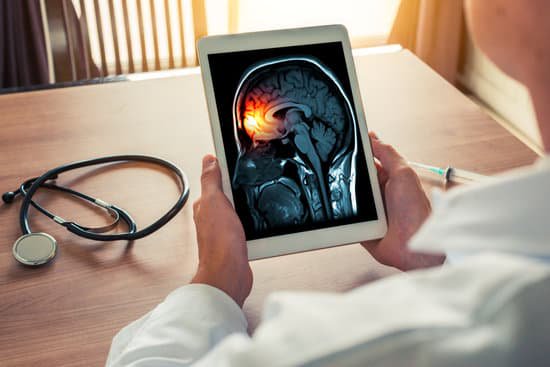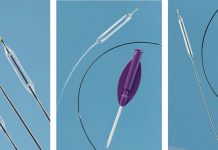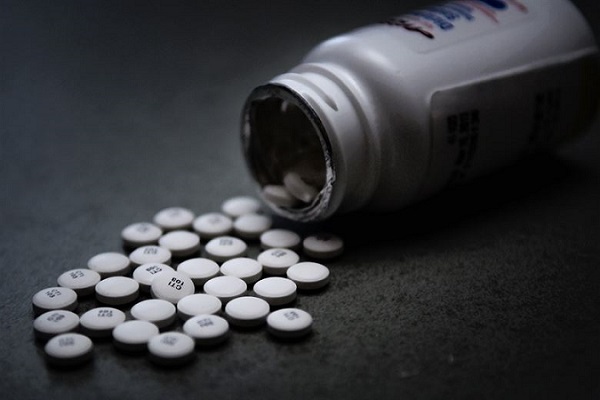Headache is one of the health conditions that have debilitating effects on you, negatively impacting your productivity and ruining your day to day tasks. This also affects your social life and leads to psychological distress in the long run. (Ramsden et al., 2015)
Cannabinoids extracted from Cannabis sativa plant have been used since ages for treating a number of health conditions.
Research has shown that CBD has anti-inflammatory, antiemetic and analgesic properties, which has lately made it popular among masses.
Because of its potent analgesic effect, CBD oil is particularly used for conditions of pain such as migraine.
Why People Use CBD Oil?
The scenario is even worse with migraine. This is the reason why people are willing to try all the remedies for its cure, be it medicines, diet alteration, natural remedies and anything new that they come across. One such promising treatment is provided by CBD oil.
According to the Institute of Medicine of The National Academies, patients with chronic pain conditions treated with CBD undergo a significant reduction in pain.
CBD is highly accepted for the fact that it does not have mind altering effects as is the case with tetrahydrocannabinol (THC) in marijuana. Up till now, there is a lack of research on CBD, but the trend for its research is increasing due to public demand for its availability.
In this article, we have catered for you questions like how CBD oil can help migraines & headaches, the best form and dosage of CBD and tips for choosing a CBD product for yourself.
How CBD Oil Can Help Migraines & Headaches?
Science behind CBD and migraines & headaches
The human body has several specialized systems to regulate internal balance (homeostasis).
One such system is the Endocannabinoid system (ECS) that is present in virtually all cell types (Aizpurua-Olaizola et al., 2017). It regulates sleep, pain, immune response, and appetite.
There are three components of this system; endocannabinoids (inner cannabis) made from dietary fats, cannabinoid receptors and enzymes for synthesis and breakdown of endocannabinoids (eCBs).
Cannabinoid receptors are present on the surface of the cells in certain parts of the body and brain, such as the areas that regulate pain. eCBs are released during an injury or sickness and bind to their receptors like a lock and key mechanism.
This activates the cells, triggering a chemical reaction inside the cell to regulate the imbalance.
When there is a deficiency of endocannabinoids, cellular imbalances cannot be regulated properly, failing to achieve homeostasis. CBD mimics endocannabinoids by binding to their receptors and regulating body balance.
Research has shown that CBD oil provides an effective treatment not only for cure but also for prevention of migraines (Pinja Leimuranta et al., 2018).
What Research Exists On CBD Oil and Marijuana As Treatment Options For Migraine?
Research has also revealed that the use of CBD to treat pain dates back to ancient times when it was used for pain control in Israel, India etc. as well as for anesthetic purposes in surgeries (Mechoulam and Hanus, 2000).
There has also been a demonstration of the beneficial effects of CBD for pain control in animals (Fox and Bevan, 2005).
Evidence shows that effectiveness of CBD in acute pain conditions elicited by mechanical, chemical and thermal stimuli is promising (Sofia et al., 1973; Guindon and Beaulieu, 2006; Ulugol et al., 2006, etc.).
Benefits of CBD are not only limited to acute pain conditions but as recent studies on animals reveal, it has proven effectiveness in conditions of chronic pain of inflammatory and neuropathic type Bridges et al., 2001; Guindon and Beaulieu, 2006, etc.).
Interestingly so, a study has shown that ECS is involved in the analgesic action of paracetamol too (Ottani et al., 2006).
However, the role of THC and CBD for pain control in humans is not very clear. Clinical trials recently with THC and CBD extracts have shown mixed results.
However, several reviews for the potential effectiveness of CBD in pain associated with migraine and trigeminal neuralgia are been conducted (Liang et al., 2004; Russo, 2004, 2006).
Patients have reported a marked reduction in the severity and frequency of headaches as well as having improved sleep with the use of CBD oil.
There are reports of patients spending less money on medications for migraine and having an improved quality of life.
Furthermore, there are ongoing studies researching for the therapeutic potential of CBD for several forms of pain (Ware and Beaulieu, 2005).
A study in Switzerland, Germany, and Austria showed that 10.2% of patients were reported to use CBD for self-medication (Kandasamy et al., 2018).
However, the results of self-medication on another group were found to be highly variable, showing that low doses would alleviate headaches while higher doses would trigger migraine (Lu and Anderson, 2017).
Thus, there’s a need for a more specific recommendation on its dosage for individual patients, and you should consider consulting your doctor before committing to a self-treatment plan.
How Does CBD Oil Interact With Common Migraine Medications?
Dr. Stephen Silberstein, in his discussion with American Headache Society, told that theoretically, CBD does not interact with any migraine medications and can be used in conjunction with them. According to him, CBD also helps prevent nausea and vomiting.
Naturally-occurring CBD oil does not have a multitude of side effects and negative drug interactions like synthetic drugs. Studies are being carried out on the mechanism of action of CBD, which has shown to have more than 65 molecular targets other than the ECS (Bih et al., 2015).
Lately, the Food and Drug Administration (FDA), the United States, has allowed the use of active CBD in Epidiolex for the treatment of epilepsy (GW Pharmaceuticals, 2017). This is marked as a key landmark towards acceptance of CBD for the treatment of migraine.
What Form of CBD Is Best To Relieve Migraine Pain Fast?
There are three forms of CBD, as discussed below. Following are the indications of each CBD type that you must use a guideline to choose the perfect CBD oil for yourself.
1) CBD Isolate
The purest form of cannabidiol is the CBD isolate. It contains about 99% cannabidiol. To produce this, CBD is isolated, and all the other components in the hemp plant such as the terpenes are stripped out.
This type of CBD is free of THC and thus doesn’t have and psychoactive properties. The CBD isolate is a fine white powder that does not have any odor or taste and can be added to food, drink or lotions.
- You can choose this type if you are sensitive to THC and feel psychoactive stimulation
- If you are sensitive to strong odors and flavors
- If you have to get drug testing done on a regular basis
- If your state doesn’t legalize the use of even a small percentage of THC
2) Full-Spectrum CBD
Full spectrum CBD is the whole plant extract and has undergone minimum processing. It’s chemical profile contains cannabinoids, terpenes, healthy fatty acids as well as 0.3% of THC. It offers both sedative as well as stimulating psychological effects.
Terpenes are aromatic oils that give cannabis its smell and flavor like mint, pine, etc. There are more than 100 different types of terpenes, and each has its own distinctive role.
This form of CBD is preferred over CBD isolate because full-spectrum CBD is more effective than the isolate. Its efficacy increases with the increasing dose, whereas the CBD isolate is only effective for pain and swelling at a particular dose.
- You want sedative as well as stimulating effects of Cannabis
- If you are tolerant of strong odors and flavors
- Have a severe condition of migraine in which CBD isolate, and broad-spectrum type is not effective
3) Broad Spectrum CBD
This type goes some processing to remove the trace amounts of THC. Other components are preserved as in full-spectrum by THC level are typically 0%. This type also has a strong odor and flavor.
- Should be used if you are sensitive to THC but tolerant to its odors
- If you want the sedative effect and no mental stimulation
- Effectiveness is similar to full-spectrum without stimulating effects of full-spectrum
- If you only want a relaxing or sedative effect, this type will be suitable for you
What are the FDA Regulations For CBD Use?
Currently, the use of CBD is not regulated by the FDA. It has prohibited marketing food or dietary supplements having CBD as it’s the active ingredient in Epidiolex.
However, the administration has eliminated certain restrictions from CBD and its derivatives on the state level.
Agriculture Improvement Act 2018 removed CBD and its derivatives with very low THC from the definition of marijuana federally.
Although they are trying to deepen their understanding of CBD and its effects, there still are concerns regarding its safety.
Having said so, you should always refer to your doctor before opting for CBD as a treatment option for migraine and headaches.
How Do You Use CBD Oil?
CBD oil starts to show its effects after about half an hour of consumption, but that largely depends on the method of its use. Following are the effective methods you can use.
1) Sublingually
Place a few drops of CBD tinctures sublingually and hold for 30 seconds then swallow. This is one of the most effective methods of CBD use as it gets absorbed in the sublingual area and shows immediate results.
Both alcoholic tinctures and those containing vegetable glycerin can be used. This method is easy, does not need any other tools, and provides long-lasting result. It can do wonders for you, and you will feel your headache disappear in minutes.
2) Topically
You can use an ointment or a balm with added phytocannabinoids. You do not need any extra accessories for this method as well. Lotions, creams, and transdermal patches are also available. You just need to rub it on the affected area gently.
It is also effective when applied to sore muscles and neck, acne, and back. This method is less effective as compared to sublingual as the permeability of the skin is relatively low.
A study conducted on rats in 2015 showed promising anti-inflammatory effects of CBD gel when applied to the skin by decreasing joint swelling.
3) Ingestion
You can also add a few drops of CBD oil to your food or drink. There are some premade products available, having infused CBD, but you should check for their FDA regulation and show them to your doctor before consuming.
You should also take your doctor’s advice on how many drops of CBD oil to add to your meal.
4) Inhalation
The fastest method of CBD use is inhalation as it goes directly into the blood through your lungs. The two ways of inhaling CBD are smoking and vaping.
According to a study published in 2010, 34-56% of CBD gets absorbed in less than 10 minutes. For this method, you will need special tools such as a vaporizer with a cartridge containing CBD oil.
Inhalation is not considered the best choice as smoking CBD can expose you to carcinogens.
A 2017 study established that vape cartridges containing carriers like vegetable glycerin, propylene glycol, etc. carry a risk of lung tissue damage so you should avoid such cartridges.
What Is The Right Dose Of CBD Oil For Migraine Headache?
As for the dosage, a study conducted in March 2018 elaborates that CBD is much less potent than THC and might require very high doses to show its benefits on pain, inflammation, anxiety, and tachycardia.
The study recommends that the starting dose should be moderate, with a gradual increase over a period of weeks.
According to this study, the total dose of THC should not exceed 30mg/day, and since you know that CBD is less potent than THC with relatively negligible mind-altering effects, you can use a dose higher than that.
What’s The Dose Of CBD Oil Before Sleep?
As for your bedtime, the dose of CBD should be between 10 to 20 mg for a much needed deep sleep amidst your hectic schedule. Start low and adjust according to your body.
However, we advise you time and again to talk to your doctor for the suitable recommended dose for you.
Tips For Choosing a CBD Product For Migraine Relief
When it comes to choosing the right CBD product, you should know that there is a host of brands providing different forms of CBD. So before opting for a product, you should pass it through a series of verifying questions.
- Is the product you are choosing is clean? It should contain only CBD extract without additional preservatives or flavors.
- What is its strength? the CBD oil you choose should have more than 30 mg CBD.
- Verify its purity. The product you opt for should contain CBD in its purest form without having unnecessary components of the hemp plant.
- Ensure if it is third party tested or not. The CBD brand you opt for, should be 3rd party tested confirming that it really contain what the label claims.
- Amidst the multitude of companies on hand, look out for the reputation the brand has embraced among people.
[ratings]
















